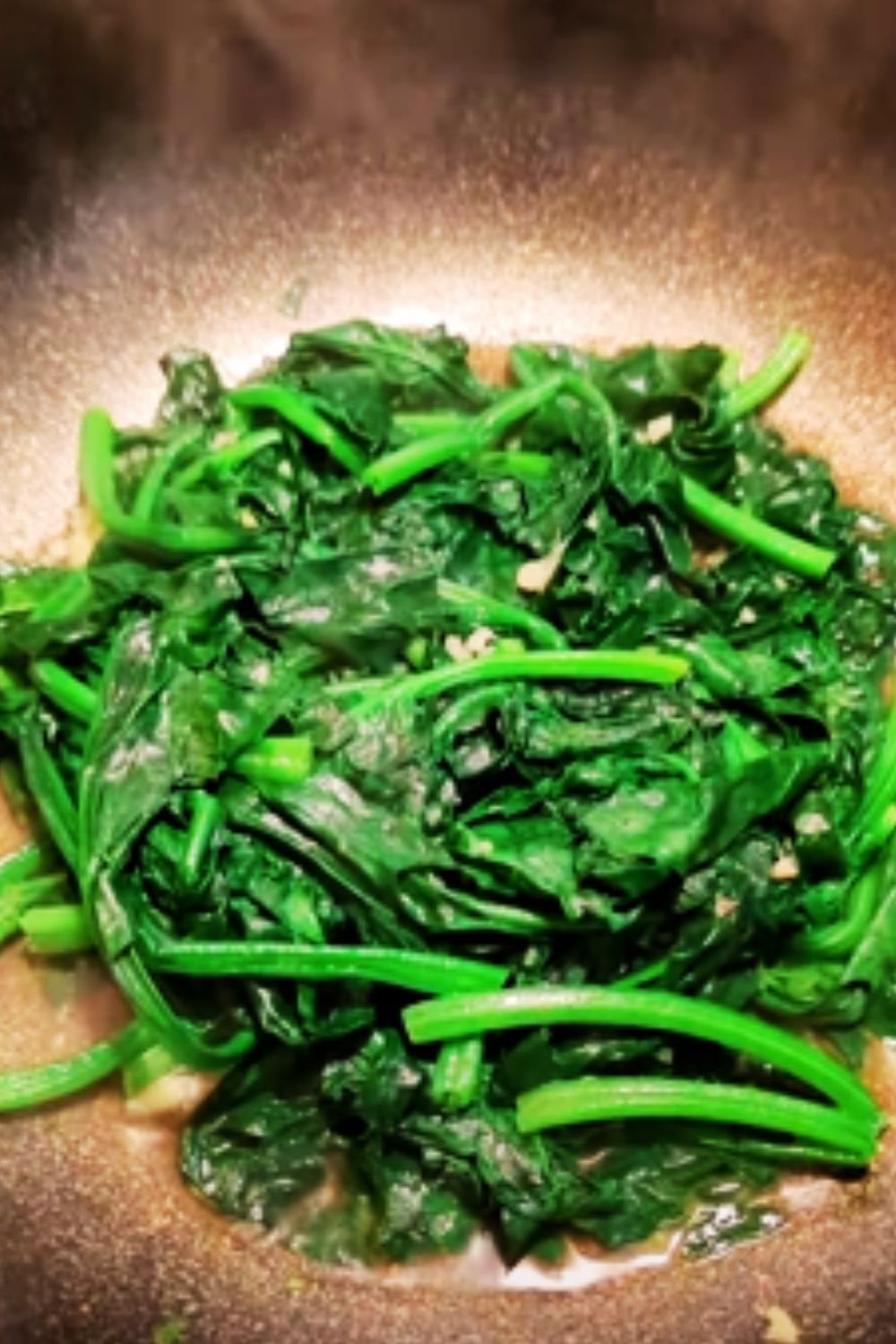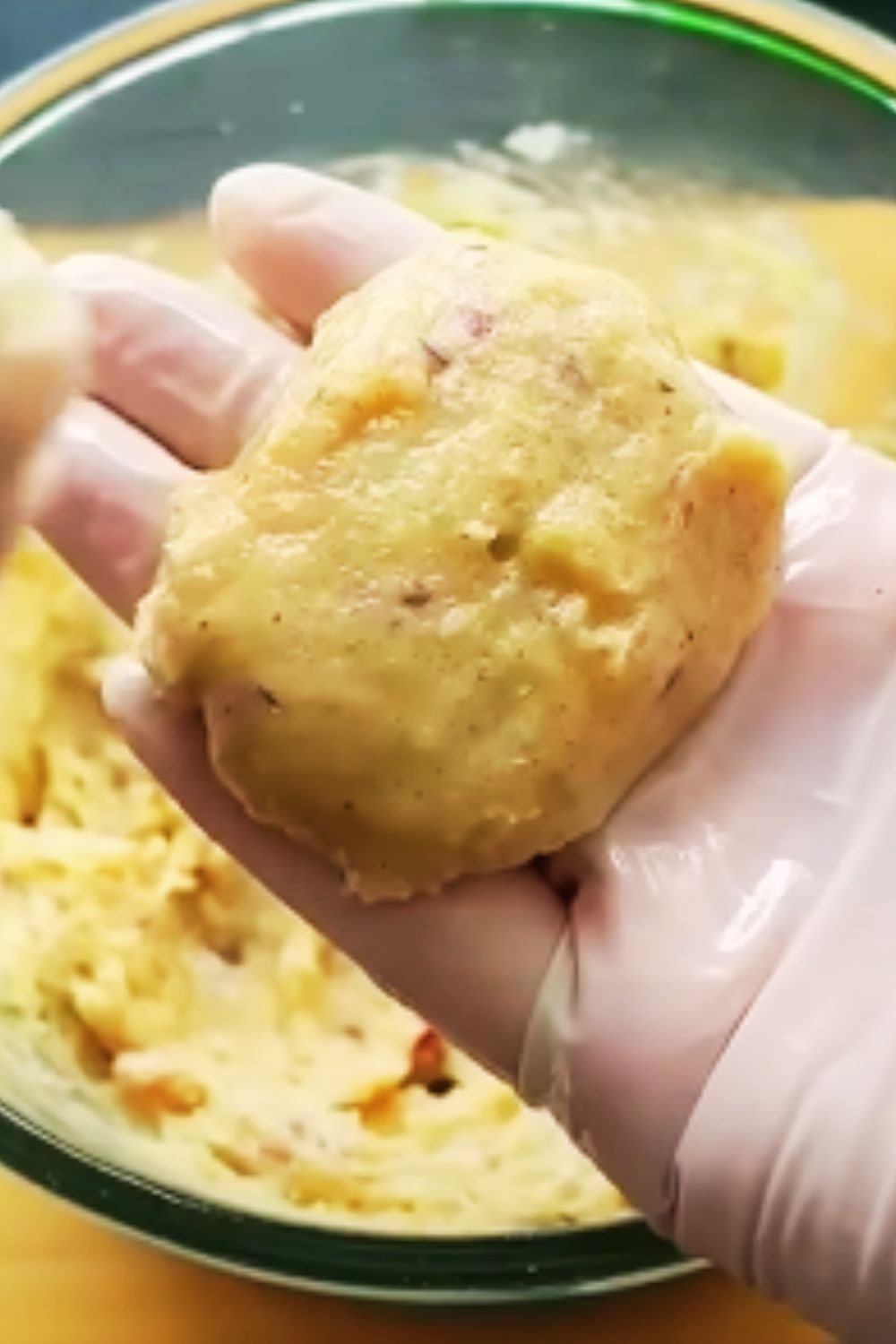Have you ever wondered how restaurants make spinach taste so incredibly delicious while yours tends to turn out bland and watery? I’ve been there too. After years of experimenting and perfecting my technique, I’m excited to share my foolproof method for creating restaurant-quality sautéed spinach right in your own kitchen.
This isn’t just any spinach recipe—it’s a game-changer that will convert even the most stubborn greens-avoiders in your household. My journey to perfect sautéed spinach began after countless disappointing attempts that left me with a sad, soggy mess instead of the vibrant, flavorful side dish I craved.
Why This Sautéed Spinach Recipe Works
Before diving into the how-to, let’s talk about why this particular approach yields such delicious results:
- Quick cooking time: Spinach cooks in minutes, making this ideal for busy weeknights
- Simple ingredients: You likely have everything you need already in your pantry
- Versatile seasoning options: Can be customized based on your main dish
- Nutrient retention: The quick sauté preserves more nutrients than boiling
- No soggy results: You’ll get perfectly tender yet still slightly crisp spinach
The magic lies in understanding a few fundamental principles about spinach and applying the right techniques. Let me walk you through everything you need to know to transform this humble leafy green into a crave-worthy dish.
Choose the Right Spinach
Your results start with selecting the best spinach available. I’ve experimented with all varieties and can guide you through making the right choice:
| Spinach Type | Best Uses | Taste Profile | Tips for Selection |
|---|---|---|---|
| Baby Spinach | Raw salads, quick sautés | Mild, tender, slightly sweet | Look for bright green leaves without yellowing or wilting |
| Regular/Flat-leaf Spinach | Cooking, sautéing, soups | More pronounced “green” flavor | Choose bunches with firm, crisp stems and vibrant leaves |
| Savoy Spinach | Heartier dishes, longer cooking | Earthy, robust flavor | Select bunches with crinkly but firm leaves and no sliminess |
For this particular sautéed spinach recipe, I prefer regular flat-leaf spinach for its more pronounced flavor when cooked, but baby spinach works beautifully too if that’s what you have on hand. The technique remains the same, though cooking time may vary slightly.
Essential Equipment
You don’t need fancy equipment, but having the right tools makes all the difference:
- Large skillet or wok: Spinach reduces dramatically in volume, but starts large
- Tongs or wooden spatula: For gentle tossing without damaging the leaves
- Colander: For draining if you pre-wash your spinach
- Clean kitchen towel or salad spinner: For thoroughly drying spinach (critical step!)
Let me emphasize that last point—properly drying your spinach is perhaps the single most important step for achieving that perfect sauté. Wet spinach steams rather than sautés, resulting in the soggy outcome we’re trying to avoid.
Ingredients for Perfect Sautéed Spinach
For the basic recipe that serves 2-3 people:
- 1 pound (16 oz) fresh spinach, thoroughly washed and dried
- 2 tablespoons extra virgin olive oil
- 3-4 garlic cloves, thinly sliced (not minced)
- ¼ teaspoon red pepper flakes (optional)
- Salt and freshly ground black pepper, to taste
- 1 tablespoon fresh lemon juice
- Lemon zest (optional but recommended)
Preparation Method
The secret to incredible sautéed spinach lies as much in the preparation as in the cooking itself. Here’s my step-by-step process:
- Prepare the spinach properly: If using regular spinach, trim tough stems and tear any very large leaves into manageable pieces. For baby spinach, simply remove any wilted leaves.
- Wash thoroughly: Even pre-washed spinach benefits from another rinse. Fill a large bowl with cold water and swish the leaves around to remove any grit or sand. Lift the spinach out (don’t pour it out, or you’ll pour the sediment back onto the leaves).
- Dry completely: This is crucial! Transfer to a salad spinner or lay the spinach on clean kitchen towels, then pat or roll gently to remove as much moisture as possible. Any remaining water will cause the spinach to steam rather than sauté.
- Prep your aromatics: Slice the garlic thinly rather than mincing it. Thin slices provide wonderful flavor without burning as easily as minced garlic. They also create delicious little flavor bombs in the finished dish.
Cooking Process
Now for the main event—cooking your spinach to perfection:
- Heat your pan properly: Place your large skillet over medium-high heat and allow it to get properly hot before adding oil. Test by flicking a tiny drop of water—it should sizzle immediately.
- Add the oil: Swirl to coat the bottom of the pan evenly, then allow it to heat until it shimmers but doesn’t smoke.
- Sauté the aromatics: Add the sliced garlic and red pepper flakes (if using). Cook for 30-45 seconds, stirring constantly, until the garlic becomes fragrant but not browned. This infuses the oil with flavor.
- Add spinach in batches: Don’t dump all the spinach in at once. Instead, add about one-third of your spinach, tossing with tongs until it begins to wilt. As space becomes available in the pan, add more spinach gradually.
- Season thoughtfully: Once all spinach is in the pan but not completely wilted, sprinkle with salt and pepper. Season conservatively at first—you can always add more later, but you can’t take it away.
- Know when to stop: The entire cooking process should take only 2-3 minutes. Your spinach is done when it’s just wilted but still bright green. Overcooking results in dull color and mushy texture.
- Finish with acid: Remove from heat and immediately sprinkle with fresh lemon juice. The acid brightens the flavor and cuts through the natural mineral taste of spinach.
- Serve promptly: Sautéed spinach is best enjoyed right away before it continues to wilt from residual heat.
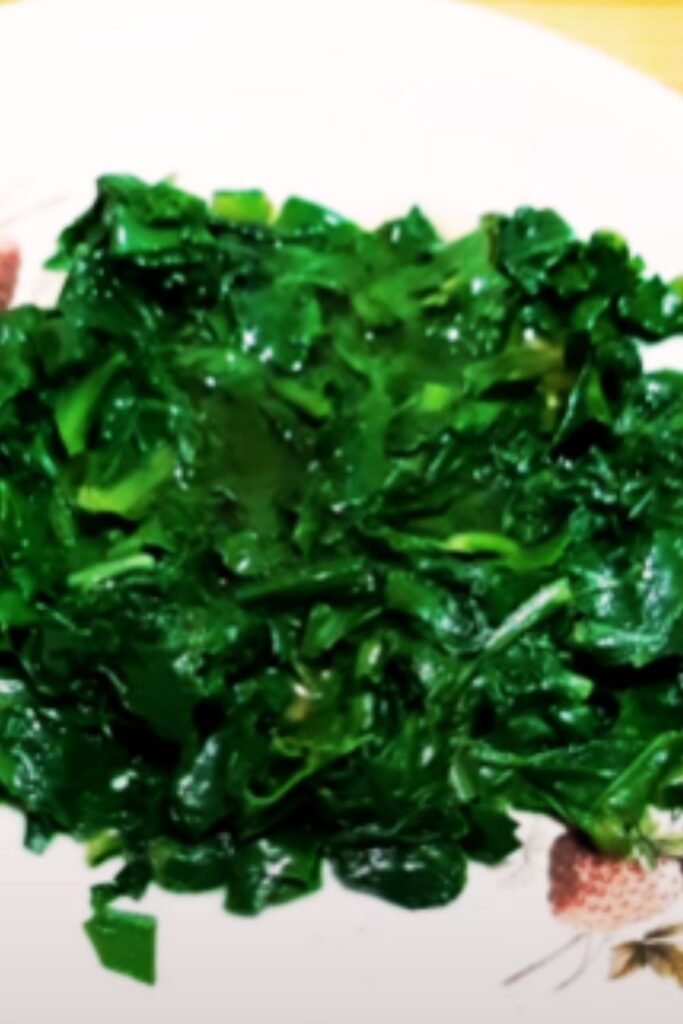
Common Problems & Solutions
Even with the best techniques, issues can arise. Here are solutions to the most common problems:
| Problem | Likely Cause | Solution |
|---|---|---|
| Watery spinach | Spinach not dried properly before cooking | Thoroughly dry spinach before cooking; use a salad spinner followed by paper towels |
| Bitter taste | Overcooking or old spinach | Cook for less time; use fresher spinach; add a pinch of sugar to balance bitterness |
| Tough stems | Mature spinach stems not removed | Trim tough stems before cooking or use baby spinach |
| Flavorless result | Insufficient seasoning | Season at the right time (during cooking, not just at the end); finish with lemon or vinegar for brightness |
| Too salty | Over-seasoning early in cooking | Season gradually as spinach wilts; remember that volume reduces dramatically |
Flavor Variations
Once you’ve mastered the basic technique, it’s fun to experiment with different flavor profiles. Here are my favorite variations:
Mediterranean Style
- Add 2 tablespoons toasted pine nuts
- Finish with 2 tablespoons crumbled feta cheese
- Include 1 tablespoon chopped fresh oregano
Asian Inspired
- Replace olive oil with sesame oil
- Add 1 teaspoon grated fresh ginger with the garlic
- Finish with 1 tablespoon soy sauce instead of salt
- Sprinkle with sesame seeds
Indian Spiced
- Add ½ teaspoon cumin seeds to hot oil before garlic
- Include ¼ teaspoon turmeric powder
- Finish with a squeeze of lime instead of lemon
Nutty Variation
- Add 2 tablespoons toasted sliced almonds
- Finish with a drizzle of nutty brown butter
- Include a pinch of nutmeg
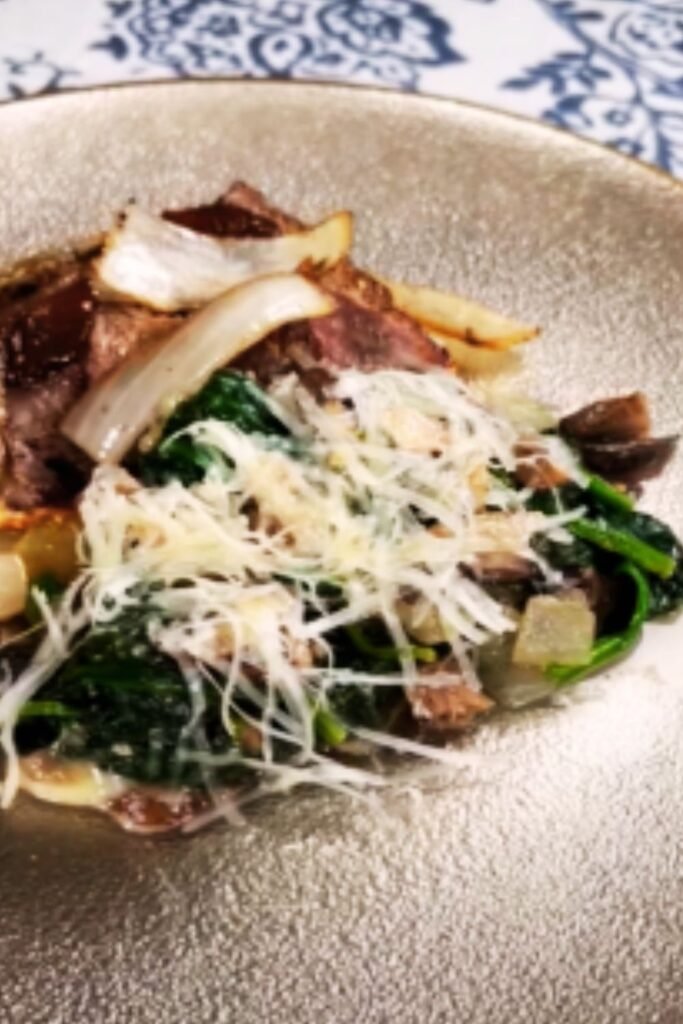
Health Benefits of Spinach
I always feel good about serving spinach, knowing it’s not just delicious but incredibly nutritious. Here’s why spinach deserves a regular spot in your meal rotation:
| Nutrient | Amount per 100g | Benefits |
|---|---|---|
| Vitamin K | 483% of Daily Value | Supports bone health and blood clotting |
| Vitamin A | 56% of Daily Value | Promotes eye health and immunity |
| Folate | 49% of Daily Value | Essential for cell growth and DNA formation |
| Vitamin C | 28% of Daily Value | Supports immune function and collagen production |
| Iron | 15% of Daily Value | Helps transport oxygen throughout the body |
| Magnesium | 20% of Daily Value | Supports muscle and nerve function |
The quick sautéing method preserves many of these nutrients better than longer cooking methods. Plus, the small amount of healthy fat from the olive oil actually helps your body absorb the fat-soluble vitamins in spinach.
Serving Suggestions
Sautéed spinach works as both a side dish and an ingredient in other recipes. Here are my favorite ways to serve it:
- As a bed for grilled fish or chicken
- Alongside eggs for a nutrient-packed breakfast
- Mixed into pasta with a sprinkle of parmesan
- Tucked into omelets or frittatas
- Added to grain bowls for extra nutrients
- Folded into mashed potatoes for a vibrant side dish
- As a topping for crostini with ricotta cheese
- Mixed into soups just before serving
For an elegant meal, I love serving this bright green side with a perfectly seared steak or salmon fillet. The gentle bitterness of the spinach beautifully complements rich main dishes.
Storing and Reheating
While sautéed spinach is best fresh, sometimes you’ll have leftovers. Here’s how to store and revive them:
- Refrigeration: Store in an airtight container for up to 3 days.
- Reheating: Gently warm in a skillet over medium-low heat just until heated through. Add a tiny splash of olive oil if needed.
- Cold uses: Alternatively, use cold leftover sautéed spinach in salads or sandwiches.
Avoid microwaving if possible, as it can make the spinach soggy and further diminish its texture.
Make-Ahead Tips
Need to prepare components in advance? Here’s how:
- Wash and thoroughly dry spinach up to 24 hours in advance, storing with a paper towel in a sealed container in the refrigerator.
- Slice garlic and store in a small covered container in the fridge for up to 2 days.
- For parties, partially wilt the spinach for 1 minute, then cool completely. Finish the sauté just before serving for only 1 additional minute.
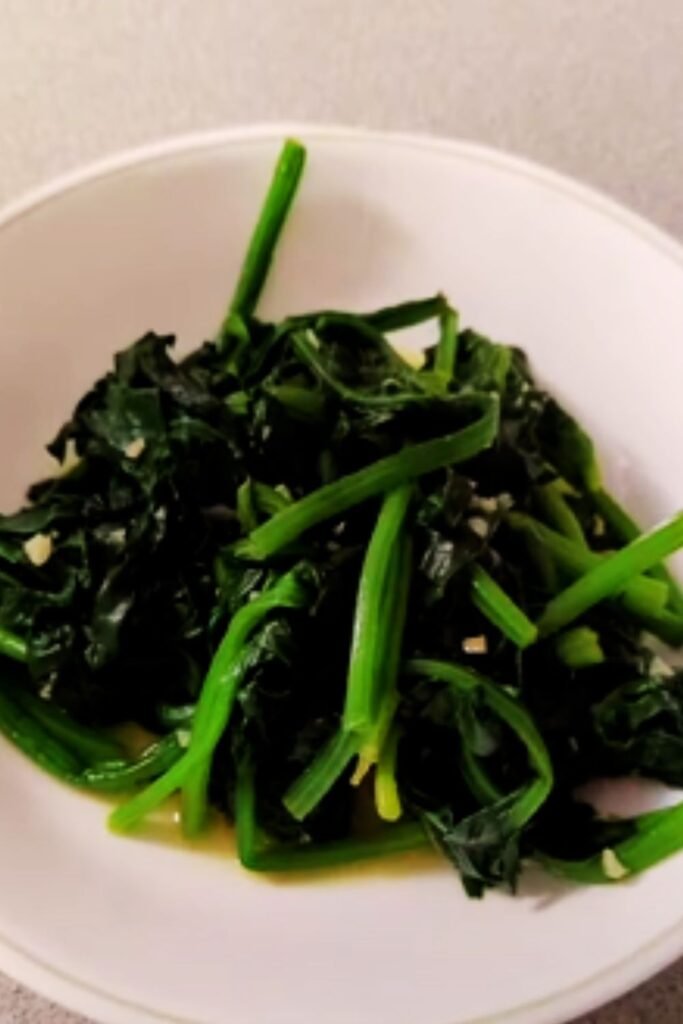
Budget Tips
Spinach can sometimes be expensive, especially organic varieties. Here are my tips for making this dish more budget-friendly:
- Buy spinach in season when prices are lower
- Check local farmers’ markets for better deals on fresh spinach
- Consider using frozen spinach—thaw completely and squeeze out all moisture before sautéing
- Grow your own! Spinach is relatively easy to grow in containers or garden beds
- Look for “imperfect” produce programs that sell slightly blemished (but perfectly usable) spinach at a discount
Perfect Pairings
The clean, slightly mineral flavor of sautéed spinach pairs wonderfully with:
- Proteins: Salmon, grilled chicken, lamb chops, white beans
- Grains: Farro, brown rice, quinoa
- Vegetables: Roasted sweet potatoes, grilled mushrooms
- Dairy: Fresh goat cheese, parmesan shavings, ricotta
- Fruits: Dried cranberries, golden raisins, preserved lemon
- Nuts: Pine nuts, walnuts, sliced almonds
For special occasions, I like to create a colorful plate with this vibrant green sautéed spinach, orange roasted sweet potatoes, and a simple protein like roasted chicken or fish.
Frequently Asked Questions
Why does my spinach become watery when I cook it? This happens when the spinach isn’t dried thoroughly before cooking or when it’s overcrowded in the pan. Make sure to dry your spinach completely and cook in batches if necessary.
Is frozen spinach a good substitute for fresh in this recipe? While fresh is preferred for the best texture, you can use frozen spinach. Thaw it completely and squeeze out all excess moisture before sautéing. The cooking time will be shorter since it’s already partially cooked.
How much fresh spinach should I buy if the recipe calls for 1 pound? One pound of fresh spinach looks like a mountain but cooks down dramatically—to about 1-1½ cups. For 4 servings as a side dish, a pound is usually sufficient.
Can I make this dish vegan? The basic recipe is already vegan! Just be careful with variations—skip the cheese additions or use plant-based alternatives.
How do I remove the bitterness from spinach? A pinch of sugar, a splash of balsamic vinegar, or partnering with naturally sweet ingredients like caramelized onions can all help balance spinach’s natural bitterness.
How can I tell when my spinach is perfectly cooked? Perfectly sautéed spinach should be just wilted, still bright green, and tender but not mushy. It should still have some structure when you bite into it.
Is sautéed spinach keto-friendly? Yes! With less than 4g of net carbs per serving and healthy fats from olive oil, this dish fits perfectly into a ketogenic eating plan.
Can I add onions to this recipe? Absolutely! Sauté thinly sliced onions until translucent before adding the garlic for a delicious flavor base.

Perfect Technique Summary
Let me recap the key points that elevate ordinary spinach to extraordinary:
- Start with completely dry spinach
- Use a large enough pan to avoid overcrowding
- Heat the pan properly before adding oil
- Sauté aromatics before adding spinach
- Add spinach in batches
- Season during cooking, not just at the end
- Cook just until wilted but still bright green
- Finish with acid (lemon juice or vinegar)
Master these principles and you’ll never again wonder how restaurants make spinach taste so amazing—because yours will be just as good, if not better!
I hope this comprehensive guide helps you create the most delicious sautéed spinach you’ve ever tasted. With these techniques and variations, this humble side dish might just become the unexpected star of your next meal. Remember, the magic is in the details: dry spinach, hot pan, quick cooking, and thoughtful seasoning. Happy cooking!
